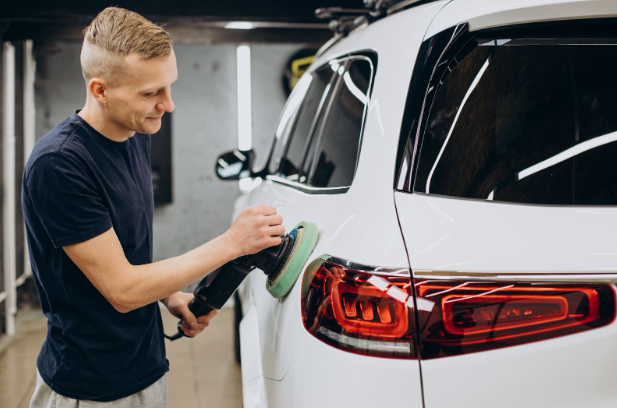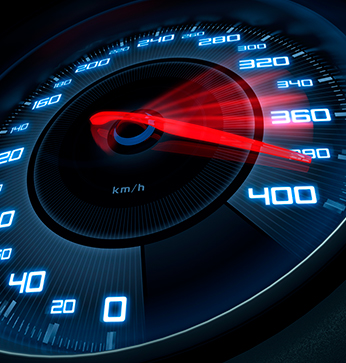Achieving that coveted showroom shine for your car involves more than a simple wash and wax. Car polishing, a meticulous process, is the key to restoring and enhancing your vehicle’s paintwork. In this comprehensive guide, we unveil the secrets behind a professional Car polishing service, exploring the techniques, benefits, and considerations that contribute to the brilliance of a showroom finish.
1. Understanding Car Polishing: Beyond Aesthetics
Defining Car Polishing
Car polishing is a cosmetic automotive service that goes beyond surface cleanliness. It involves the removal of imperfections, scratches, oxidation, and swirl marks from the paint surface. The main objective is to bring back the paint’s brilliance, depth, and smoothness to produce a glossy finish that protects the car from the elements while also improving the vehicle’s appearance.
The Scientific Aspects of Polishing
Car polishing operates on the principles of abrasion and refinement. Polishing compounds contain tiny abrasive particles that, when applied and worked into the paint surface, gently remove imperfections. Subsequent polishing steps use finer compounds to refine the surface, resulting in a smooth and reflective finish. Understanding the science behind these compounds is crucial for achieving optimal results.
2. Advantages of Professional Car Polishing
Reviving the Brilliance of Paintwork
One of the primary benefits of professional car polishing is the restoration of paintwork brilliance. Over time, a vehicle’s paint can develop dullness, swirl marks, and scratches. Polishing effectively eliminates these imperfections, revealing the vibrant and lustrous finish that is characteristic of a showroom-quality vehicle.
Enhanced Paint Protection
Car polishing provides more than just aesthetic improvements; it offers enhanced paint protection. The process removes contaminants, pollutants, and oxidized layers from the paint, creating a clean and well-protected surface. This protection is particularly valuable in extending the longevity of the paint and safeguarding the vehicle against the damaging effects of UV rays and environmental pollutants.
3. Types of Car Polishing: Cutting Through the Options
Abrasive Polishing vs. Non-Abrasive Polishing
Car polishing comes in various forms, with abrasive and non-abrasive options catering to different paint conditions. Using compounds with different degrees of abrasiveness, abrasive polishing is a technique used to remove flaws and scratches. Non-abrasive or “finishing” polishes are milder and focus on enhancing gloss without removing significant layers of paint.
Single-Stage vs. Multi-Stage Polishing
Single-stage polishing involves a single application of a polishing compound to address minor imperfections and enhance gloss. Multi-stage polishing, on the other hand, utilizes a sequence of abrasive compounds, each with a different level of aggressiveness. This method is more comprehensive and suitable for correcting deeper scratches and achieving a refined finish.
4. Professional vs. DIY Car Polishing: Making an Informed Choice
Expertise and Precision of Professional Services
While DIY polishing kits are available, professional car polishing services offer a level of expertise and precision that is challenging to replicate at home. Trained technicians understand the intricacies of different paint types, know the appropriate compounds for specific imperfections and use professional-grade equipment to achieve consistent and exceptional results.
Quality of Polishing Compounds and Equipment
Auto body repair shops invest in high-quality polishing compounds and advanced equipment. These compounds are formulated for effectiveness without causing damage, and the equipment ensures uniform application and results. The use of professional-grade tools contributes to a superior finish that is challenging to achieve with standard consumer-grade products.
5. The Car Polishing Process: Step-by-Step
Surface Preparation
The car polishing process begins with thorough surface preparation. This entails giving the car a wash to get rid of dirt, tar, and surface impurities. Clay bar treatment may be applied to further cleanse the paint surface and prepare it for polishing.
Test Spot and Paint Assessment
Professionals often conduct a test spot to assess the condition of the paint and determine the appropriate polishing approach. This step allows technicians to select the right polishing compounds and techniques for optimal results without compromising the paint.
6. Paint Correction: Addressing Imperfections
Compounding for Imperfection Removal
The compounding stage involves the application of an abrasive polishing compound to eliminate scratches, swirl marks, and other imperfections. Technicians use specialized machines equipped with polishing pads to work the compound into the paint surface, gradually restoring a smooth and flawless finish.
Refinement for Gloss Enhancement
Following compounding, refinement comes into play. Finer polishing compounds are applied to enhance gloss and further refine the paint surface. This step contributes to the depth and clarity of the finish, creating a reflective and vibrant appearance.
7. Finishing Touches: Sealants and Protectants
Application of Sealants or Wax
Once the polishing process is complete, a protective layer is applied to seal and enhance the results. This can be in the form of a high-quality carnauba wax or a synthetic sealant. These products provide additional protection against environmental elements, UV rays, and contaminants, preserving the polished finish for an extended period.
Final Inspection and Quality Check
A thorough final inspection ensures that the polished surface meets the desired standards. Technicians scrutinize every inch of the vehicle to confirm the removal of imperfections, the uniformity of the finish, and the overall brilliance of the paintwork. This quality check is a critical step in delivering a showroom-quality result.
8. Maintaining the Showroom Shine: Tips for Car Owners
Regular Washing and Maintenance
Maintaining the showroom shine requires regular washing and upkeep. Use a pH-balanced car wash solution, microfiber cloths, and gentle washing techniques to prevent swirl marks and scratches. Consistent maintenance ensures that the benefits of car polishing endure over time.
Avoiding Abrasive Materials and Techniques
To preserve the polished finish, car owners should avoid using abrasive materials or aggressive cleaning techniques. This includes avoiding automatic car washes with stiff brushes and steering clear of abrasive cleaning agents. Gentle care and attention to detail contribute to the longevity of the polished surface.
9. Choosing the Right Professional Car Polishing Service: Considerations and Tips
Exploring Service Providers
When seeking a professional car polishing service, thorough research is essential. Look for service providers with a reputation for excellence, positive customer reviews, and a commitment to using high-quality products. Online forums, recommendations from fellow car enthusiasts, and reviews on trusted platforms can guide you in selecting a reputable service.
Evaluating Proficiency and Background
The expertise and experience of the technicians performing the car polishing are crucial factors. Inquire about the training and certifications of the professionals, as well as the number of years they have been in the industry. Skilled technicians are more likely to deliver consistent and superior results.
Conclusion: Reveling in the Brilliance of a Professionally Polished Car
In conclusion, the art and science of car polishing unlock the secrets to achieving a showroom shine that captivates and protects. Whether addressing minor imperfections or conducting a comprehensive paint correction, professional car polishing services elevate the aesthetic appeal and longevity of your vehicle. By understanding the intricacies of the process and making informed choices, car owners can revel in the brilliance of a professionally polished car, turning every drive into a showcase of automotive excellence.




